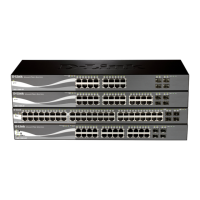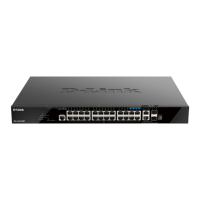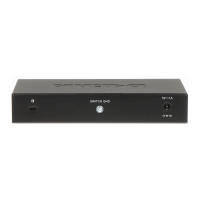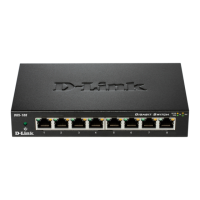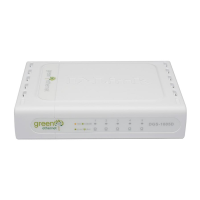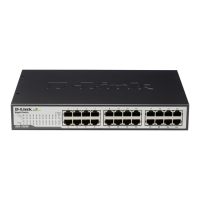DGS-1510 Series Gigabit Ethernet SmartPro Switch Web UI Reference Guide
349
Figure 9-90 SSH User Settings window
The fields that can be configured are described below:
Parameter Description
User Name
Enter the SSH user’s username used here. This name can be up to 32
characters long.
Authentication Method
Select the authentication methods used here. Options to choose from
are Password, Public Key, and Host-based.
Key File After selecting the Public Key or Host-based option as the
Authentication Method, enter the public key here.
Host Name After selecting the Host-based option as the Authentication Method,
enter the host name here.
IPv4 Address After selecting the Host-based option as the Authentication Method,
select and enter the IPv4 address here.
IPv6 Address After selecting the Host-based option as the Authentication Method,
select and enter the IPv6 address here.
Click the Apply button to accept the changes made.
Enter a page number and click the Go button to navigate to a specific page when multiple pages exist.
SSL
Secure Sockets Layer (SSL) is a security feature that will provide a secure communication path between
a host and client through the use of authentication, digital signatures and encryption. These security
functions are implemented through the use of a cipher suite, which is a security string that determines the
exact cryptographic parameters, specific encryption algorithms and key sizes to be used for an
authentication session and consists of three levels:
• Key Exchange: The first part of the Cipher suite string specifies the public key algorithm to be
used. This switch utilizes the Rivest Shamir Adleman (RSA) public key algorithm and the Digital
Signature Algorithm (DSA), specified here as the DHE DSS Diffie-Hellman (DHE) public key
algorithm. This is the first authentication process between client and host as they “exchange keys”
in looking for a match and therefore authentication to be accepted to negotiate encryptions on the
following level.
• Encryption: The second part of the cipher suite that includes the encryption used for encrypting
the messages sent between client and host. The Switch supports two types of cryptology
algorithms:
o Stream Ciphers – There are two types of stream ciphers on the Switch, RC4 with 40-bit
keys and RC4 with 128-bit keys. These keys are used to encrypt messages and need to
be consistent between client and host for optimal use.
o CBC Block Ciphers – CBC refers to Cipher Block Chaining, which means that a portion
of the previously encrypted block of encrypted text is used in the encryption of the current

